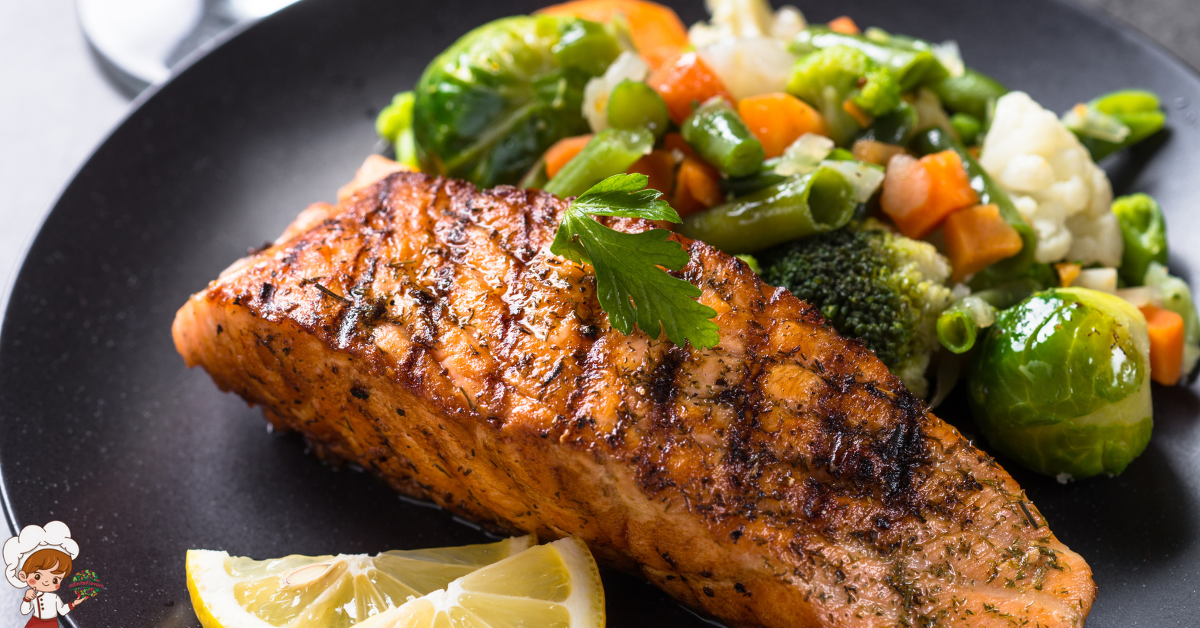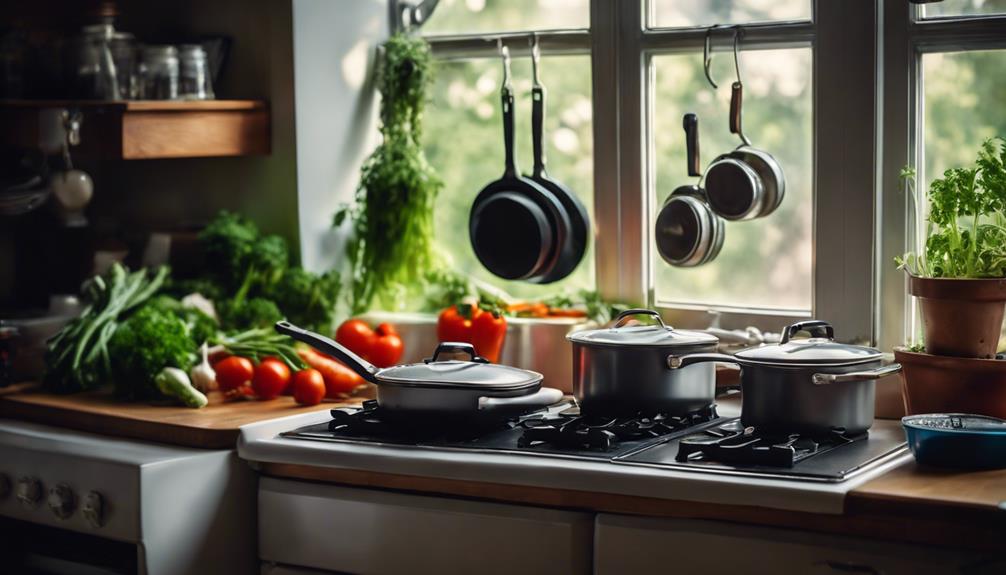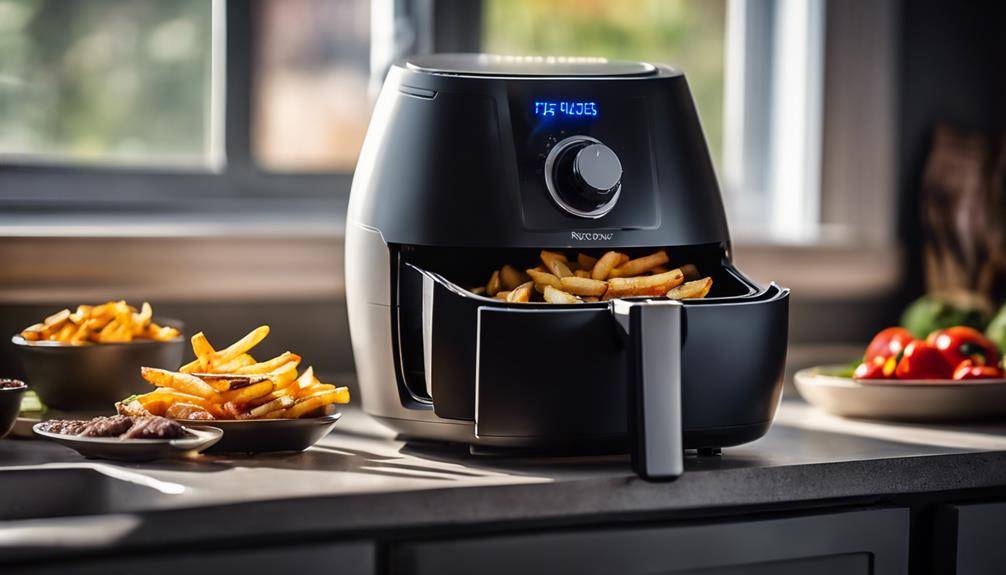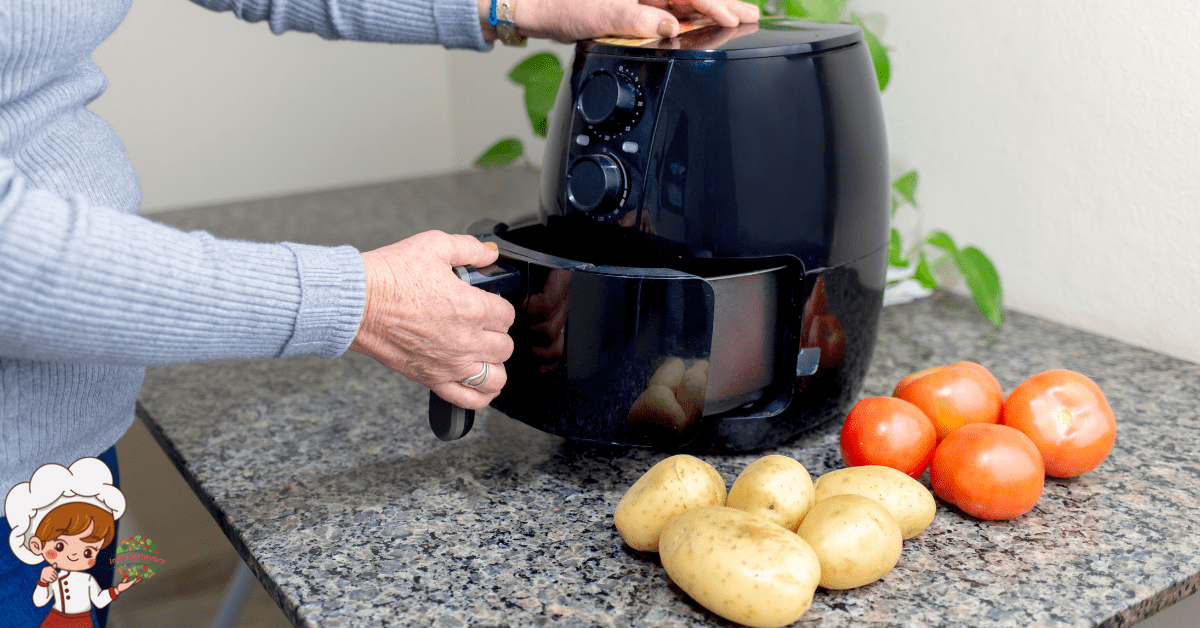How To Maximize Farming Profits With Aquaponics
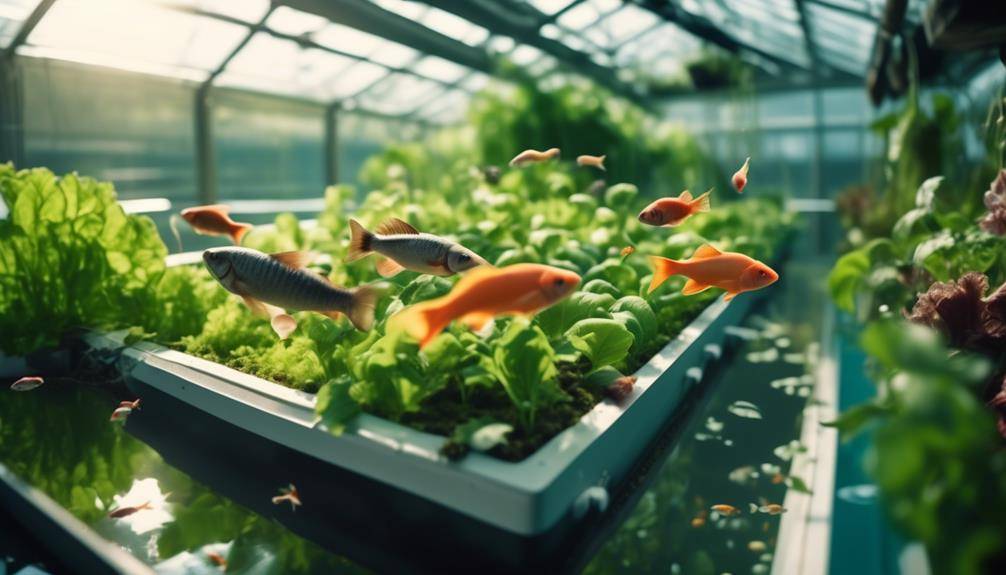
Maximize Farming Profits With Aquaponics; Step into the world of aquaponics, where the synergy between fish and plants creates a harmonious dance of profitability. Imagine the untapped potential of maximizing your farming profits through this innovative system. Are you ready to discover the secrets behind this thriving industry? Dive into the depths of aquaponics and explore the strategies that will elevate your farming endeavors to new heights of success.
Understanding Aquaponics Basics
To maximize farming profits with aquaponics, it is essential to have a clear understanding of the basics of this innovative and sustainable farming technique. Aquaponics combines aquaculture (raising fish) and hydroponics (growing plants without soil) to create a symbiotic system where fish waste provides nutrients for the plants, and the plants filter and clean the water for the fish. This closed-loop system offers numerous advantages, such as reduced water usage, elimination of chemical fertilizers, and higher crop yields compared to traditional farming methods.
When it comes to aquaponics system design, there are a few key factors to consider. First, the size and layout of the system should be based on the available space and desired production capacity. Factors such as the number and size of fish tanks, the number and type of plants, and the filtration system must be carefully planned to ensure optimal functioning. Additionally, factors like water quality, temperature, and pH levels should be regularly monitored and adjusted as necessary to maintain a healthy environment for both the fish and plants.
While aquaponics offers many benefits, it is not without its challenges. Troubleshooting aquaponics issues requires a systematic approach. When faced with problems such as poor plant growth or fish health issues, it is crucial to identify the root cause. This can involve testing the water parameters, inspecting the system for any clogs or leaks, and examining the plants and fish for signs of disease or nutrient deficiencies. By addressing any issues promptly and making necessary adjustments, farmers can maintain the productivity and profitability of their aquaponics system.
Choosing the Right Fish for Aquaponics
What are the key factors to consider when choosing the fish for your aquaponics system to maximize farming profits? Making the right fish selection is crucial for ensuring aquaponics profitability. When selecting fish for your system, there are several important factors to consider.
First and foremost, you need to consider the market demand for the fish you choose. Conduct thorough market research to identify the fish species that are in high demand and fetch a good price in your area. This will help ensure that you can sell your fish easily and at a profitable price.
Another factor to consider is the growth rate of the fish. Opt for fast-growing fish species that reach market size quickly. This will enable you to harvest and sell your fish more frequently, increasing your overall profitability.
The feeding habits of the fish also play a crucial role. Choose fish that are efficient feed converters, meaning they can convert feed into body mass effectively. This will help you minimize the cost of fish feed and maximize your profits.
Furthermore, consider the water temperature requirements of the fish species you choose. Select fish that can thrive in the water temperature range of your aquaponics system without the need for additional heating or cooling. This will help you save on energy costs and improve your profitability.
Lastly, consider the hardiness and disease resistance of the fish species. Opt for fish that are resilient and less prone to diseases, as this will reduce the risk of fish loss and ensure a higher survival rate.
Selecting the Ideal Plants for Aquaponics
Considering the profitability of your aquaponics system, it is crucial to carefully select the ideal plants that will thrive and contribute to your farming success. Aquaponics plant selection plays a vital role in maximizing crop growth and ensuring a bountiful harvest. Here are three sub-lists to help you visualize the best plant options for your aquaponics system:
- Leafy Greens:
- Lettuce: With its fast growth and high nutrient requirements, lettuce is an excellent choice for aquaponics. Varieties like romaine, butterhead, and leaf lettuce can be harvested within weeks.
- Spinach: Known for its nutritional value, spinach thrives in aquaponics due to its high iron and potassium requirements. Its deep green leaves are perfect for salads and smoothies.
- Kale: This nutrient-dense superfood is a favorite among health-conscious consumers. Kale’s sturdy leaves make it a hardy plant that can withstand various growing conditions.
- Herbs:
- Basil: This aromatic herb grows exceptionally well in aquaponics systems. With its versatile culinary uses, basil is in high demand and can fetch a premium price.
- Mint: Known for its refreshing flavor, mint is a popular choice in aquaponics. Its fast growth and ability to spread make it a great addition to your system.
- Parsley: With its delicate leaves and vibrant green color, parsley adds a touch of freshness to any dish. It grows well in aquaponics and can be harvested continuously.
- Fruiting Plants:
- Tomatoes: These juicy, vine-ripened fruits are a staple in many diets. Choose determinate tomato varieties for aquaponics as they have a compact growth habit and produce early yields.
- Bell Peppers: With their crisp texture and vibrant colors, bell peppers are highly sought after. Consider growing compact pepper varieties in your aquaponics system for a consistent harvest.
- Strawberries: These sweet, juicy berries are a delightful addition to any aquaponics garden. Opt for everbearing varieties for a continuous supply throughout the growing season.
Setting Up Your Aquaponics System
One crucial step in maximizing the profitability of your aquaponics system is setting it up efficiently and effectively. To ensure a smooth operation, proper maintenance and troubleshooting of aquaponics problems are essential.
First and foremost, when setting up your aquaponics system, you must consider the location. Choose a spot that receives adequate sunlight and is easily accessible for maintenance tasks. It is also crucial to have a stable and level surface to prevent any structural issues or water leakage.
Next, carefully select the materials for your system. Use high-quality fish tanks, grow beds, and plumbing components to ensure durability and longevity. Investing in reliable equipment will help minimize maintenance and repair costs in the long run.
When it comes to system maintenance, regular monitoring is key. Keep an eye on water parameters such as temperature, pH levels, and ammonia levels to ensure optimal conditions for both fish and plants. Conduct regular water testing and make necessary adjustments to maintain a balanced ecosystem.
Troubleshooting aquaponics problems requires a systematic approach. If you notice any issues like poor plant growth or fish health problems, start by checking water quality parameters. If everything seems fine, examine the plumbing system for any clogs, leaks, or blockages. Sometimes, simple adjustments to water flow or nutrient levels can resolve the problem.
Managing Water Quality in Aquaponics
To maximize the profitability of your aquaponics system, it is crucial to effectively manage the water quality. Two key aspects to focus on are water filtration techniques and monitoring pH levels. Implementing a reliable filtration system will help remove any solid waste and maintain water clarity, while regular pH monitoring will ensure a stable environment for your fish and plants. By prioritizing these aspects of water quality management, you can optimize the overall health and productivity of your aquaponics system.
Water Filtration Techniques
Implementing effective water filtration techniques is crucial for maintaining optimal water quality in aquaponics systems, ensuring the success and profitability of your farming operation. Advanced filtration techniques enable sustainable water management, providing a clean and healthy environment for both fish and plants. Here are three sub-lists that illustrate the importance of water filtration in aquaponics:
- Mechanical Filtration: This technique involves removing solid particles from the water using filters or screens. It helps prevent clogging in the system, ensuring smooth water flow and reducing the risk of nutrient buildup.
- Biological Filtration: This process utilizes beneficial bacteria to break down harmful substances, such as ammonia and nitrites, into less toxic compounds. It creates a stable and balanced ecosystem, promoting healthy fish and plant growth.
- Chemical Filtration: By using activated carbon or other absorbent materials, chemical filtration helps remove impurities, toxins, and excess nutrients from the water. It enhances water clarity and reduces the risk of diseases, improving overall system performance.
Monitoring Ph Levels
Maintaining optimal water quality in aquaponics systems requires careful monitoring of pH levels, as it directly impacts the health and productivity of both fish and plants. The pH level determines the acidity or alkalinity of the water, which can significantly influence the growth and development of aquatic organisms. In aquaponics, the ideal pH range is typically between 6.8 and 7.2. If the pH level is too high or too low, it can lead to nutrient deficiencies, hinder nutrient uptake, and even cause stress or death in fish and plants.
To maintain pH levels, regular testing using pH meters or test kits is essential. If the pH deviates from the desired range, corrective measures such as adding pH adjusters or buffers can be taken to stabilize the water conditions. Monitoring pH levels is a critical aspect of aquaponics management to ensure optimal conditions for the success of your farming venture.
Optimizing Nutrient Cycling in Aquaponics
Maximize the efficiency of nutrient cycling in aquaponics by carefully managing the balance of fish waste and plant uptake. Nutrient management is crucial for the success of organic farming techniques in aquaponics. Here are three key strategies to optimize nutrient cycling in your aquaponics system:
- Monitor and adjust fish feeding: The amount of fish waste produced directly affects the nutrient levels in the system. Overfeeding the fish can lead to excessive nutrient accumulation, while underfeeding can result in nutrient deficiencies for the plants. Regularly test the water for nutrient levels and adjust the fish feeding accordingly to maintain a balanced nutrient cycle.
- Implement a biofilter: A biofilter is a key component of aquaponics systems that helps convert toxic ammonia, produced by fish waste, into nitrate, which is more readily absorbed by plants. By ensuring the biofilter is properly sized and functioning effectively, you can enhance nutrient cycling and prevent ammonia buildup, which can be harmful to fish and plants.
- Optimize plant uptake: The plants in your aquaponics system play a crucial role in nutrient cycling. Maximizing plant uptake is essential for maintaining a healthy balance of nutrients. Ensure that plants receive adequate light, water, and nutrients to promote optimal growth and nutrient absorption. Regularly monitor plant health and adjust nutrient levels as needed to avoid deficiencies or excesses.
Maximizing Fish Production in Aquaponics
To increase fish production in your aquaponics system, focus on optimizing the fish feeding schedule and water quality. These two factors play a crucial role in maximizing plant growth and increasing fish productivity.
When it comes to the fish feeding schedule, it is important to provide the right amount of food at the right time. Overfeeding can lead to excess waste, which can negatively impact water quality and may even cause fish stress or disease. On the other hand, underfeeding can result in slow growth and poor fish health. Therefore, it is essential to strike a balance and feed the fish according to their nutritional needs.
Water quality is another key aspect to consider when aiming to maximize fish production. Maintaining optimal water conditions is vital for fish health and growth. Regularly monitor water parameters such as temperature, pH, ammonia, nitrite, and nitrate levels. Any fluctuations or imbalances should be addressed promptly to ensure a stable and healthy environment for the fish.
In addition to monitoring water quality, you should also focus on maintaining proper filtration and aeration in your aquaponics system. A well-designed filtration system will help remove excess waste, toxins, and uneaten food from the water, preventing potential harm to the fish. Aeration, on the other hand, ensures that there is enough dissolved oxygen in the water, which is crucial for fish respiration and overall health.
Enhancing Crop Yield in Aquaponics
To enhance crop yield in aquaponics, you need to focus on two key factors: nutrient-rich water circulation and the beneficial symbiotic relationship between fish and plants. By ensuring a continuous flow of nutrient-rich water throughout the system, you can provide the essential elements that plants need for optimal growth. Additionally, harnessing the symbiotic relationship allows plants to absorb nutrients from fish waste, leading to increased crop yield and healthier plants overall.
Nutrient-Rich Water Circulation
The circulation of nutrient-rich water plays a pivotal role in maximizing crop yield within the context of aquaponics. By implementing effective water circulation systems, you can ensure that the plants receive a constant supply of essential nutrients, resulting in healthier and more productive crops. Here are three key aspects to consider when it comes to nutrient-rich water circulation:
- Water quality testing: Regularly monitoring the water quality is crucial to maintain optimal nutrient levels. Conducting tests for pH, ammonia, nitrite, and nitrate levels will help you make necessary adjustments to ensure that the water is in the ideal range for plant growth.
- Nutrient supplementation: In aquaponics, fish waste provides a significant portion of the nutrients required by the plants. However, supplementation may be necessary to address potential deficiencies. By adding specific nutrients, such as iron, calcium, and magnesium, you can ensure that the plants have access to a well-balanced nutrient supply.
- Proper water movement: Implementing effective water movement systems, such as pumps and aerators, helps distribute nutrients evenly and prevents stagnation. This promotes healthy root development, enhances nutrient absorption, and reduces the risk of diseases.
Beneficial Symbiotic Relationship
Implementing a symbiotic relationship between fish and plants is key to maximizing crop yield in aquaponics. This beneficial symbiotic relationship offers numerous advantages for sustainable agriculture. As fish produce waste, their excretions contain essential nutrients that act as natural fertilizers for plants. In turn, the plants absorb these nutrients, effectively purifying the water for the fish. This nutrient-rich water circulation ensures that crops receive the necessary elements for optimal growth and development.
Additionally, the plants act as a natural filtration system, removing harmful substances from the water, thus creating a healthier environment for the fish. The symbiotic benefits of this relationship not only enhance crop yield but also promote water conservation and reduce the need for chemical fertilizers, making aquaponics an environmentally-friendly and economically viable solution for maximizing farming profits.
Minimizing Costs in Aquaponics Farming
By adopting cost-effective strategies, you can optimize profitability in aquaponics farming. Minimizing costs and improving efficiency are crucial for maximizing your profits in this agricultural practice. Here are some practical ways to reduce expenses and increase efficiency in aquaponics farming:
- Utilize renewable energy sources: Investing in solar panels can significantly reduce your electricity costs, as they harness the power of the sun to generate electricity for your aquaponics system. This not only reduces your dependency on traditional energy sources but also lowers your operating expenses.
- Implement water-saving techniques: Water is a valuable resource in aquaponics farming. By incorporating water-saving techniques such as drip irrigation and mulching, you can reduce water consumption and optimize its usage. This leads to lower water bills and improved efficiency in your farming operations.
- Optimize feed conversion: Efficient feed management is essential for minimizing costs in aquaponics farming. By using high-quality fish feed and ensuring proper feeding practices, you can maximize the conversion of feed into fish biomass. This reduces feed waste and lowers expenses associated with purchasing additional feed.
Scaling Up Your Aquaponics Operation
To successfully expand your aquaponics operation and capitalize on the cost-saving strategies mentioned earlier, it is crucial to consider the scalability of your farming system. Scaling up your aquaponics operation allows you to increase production, maximize energy efficiency, and take advantage of expanding market opportunities.
When it comes to maximizing energy efficiency, consider implementing advanced technologies such as LED lighting and efficient water pumps. LED lights consume less electricity and have a longer lifespan compared to traditional lighting systems. Additionally, investing in energy-efficient water pumps can help reduce electricity usage while maintaining optimal water flow throughout your aquaponics system. These energy-saving measures not only lower operational costs but also contribute to a more sustainable farming practice.
Expanding market opportunities is another key aspect of scaling up your aquaponics operation. Conduct thorough market research to identify potential customers and their preferences. By diversifying your product offerings and targeting niche markets, you can tap into new revenue streams and increase your profitability. For example, you could consider growing specialty crops that are in high demand, such as rare herbs or exotic vegetables. Additionally, explore partnerships with local restaurants, grocery stores, or community-supported agriculture (CSA) programs to establish a consistent customer base.
Maximize Farming Profits With Aquaponics; Frequently Asked Questions
Can Aquaponics Be Used for Large-Scale Commercial Farming?
Yes, aquaponics can be used for large-scale commercial farming. It offers numerous benefits such as increased crop yield, water conservation, and reduced environmental impact. Aquaponics is also being successfully implemented in developing countries to address food security challenges.
What Are the Potential Challenges or Drawbacks of Using Aquaponics?
Aquaponics has some challenges and drawbacks to consider. These may include the need for constant monitoring of water quality, potential disease outbreaks, and the initial investment required for setting up the system.
How Does the Cost of Setting up and Maintaining an Aquaponics System Compare to Traditional Farming Methods?
The cost of setting up and maintaining an aquaponics system is comparable to traditional farming methods. However, the scalability potential of aquaponics allows for increased production and higher profits in the long run.
Are There Any Specific Regulations or Permits Required for Operating an Aquaponics Farm?
Operating an aquaponics farm requires specific regulations and permits. It’s important to comply with local laws regarding water usage, waste management, and food safety. Understanding and following these regulations will ensure a successful and legal operation.
Can Aquaponics Be Used in Areas With Limited Access to Water or Electricity?
In areas with limited access to water or electricity, aquaponics can be a viable option for water efficient farming methods. Off grid farming techniques can be utilized to maximize farming profits.
Conclusion
In conclusion, aquaponics offers a unique and efficient approach to farming that maximizes profits. By understanding the basics of aquaponics, selecting the right fish and plants, and managing water quality, you can optimize fish production and enhance crop yield. Additionally, by minimizing costs and scaling up your operation, you can further increase profitability. Embracing the data-driven, analytical, and practical aspects of aquaponics will undoubtedly lead to successful and lucrative farming ventures.



